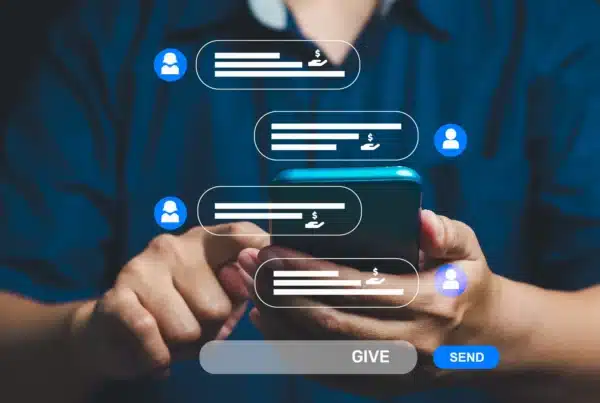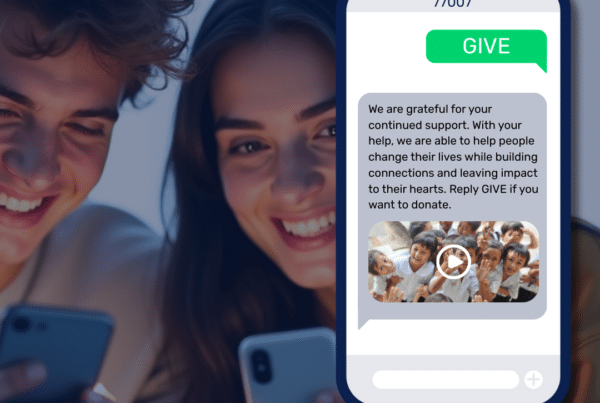The spring season represents a time of renewal, hope, and new beginnings. It’s a prime opportunity for organizations—especially faith-based organizations—to connect with existing audiences and welcome new guests into your communities. Just as nature thaws and comes to life, we can help our communities experience a “springtime of the soul.”
This article, based on a discussion with our team of texting strategists, explores effective texting strategies to help you make the most of this special season.
The Power of the Season
As C.S. Lewis eloquently wrote in The Lion, the Witch, and the Wardrobe, “Always winter, but never Christmas” depicts a world frozen and stagnant. Spring, and Easter within it, offer a powerful contrast. It’s a time when hope blossoms and people are more receptive to messages of renewal and community.
This resonates deeply, particularly after periods of collective challenge and isolation. People are seeking connection and new beginnings, making this the perfect time for your organization to offer support and opportunities for engagement.
Texting: The Ideal Tool for Connection
In today’s fast-paced world, texting has emerged as the preferred communication method for many. With open rates exceeding of 99%, it’s a powerful way to reach your audience directly and personally.
Texting allows for two-way communication, fostering a sense of connection and allowing you to truly listen to your community’s needs. It’s not just about broadcasting information; it’s about building relationships.
Strategies for Effective Easter Texting
Our team of experts has developed proven strategies to help you maximize your impact this spring season:
- Information and Engagement: Use texting to share essential details about Easter services, events, and community outreach programs. Make it easy for people to access information and participate in activities.
- Digital Discipleship: Leverage the season of Lent and Easter to deepen spiritual connections. Offer daily reading plans, weekly prayer prompts, or reflections on Holy Week to guide your community on their faith journey.
- Fuel Your Existing Message: Don’t reinvent the wheel. Use texting to amplify the messages and themes you’re already focusing on in your sermons, campaigns, and other communications. Share resources via MMS, graphics, and short videos that complement your overall message.
- Empower Your Community: Equip your members to share the message of Easter with their own networks. Create shareable graphics and text templates that they can easily forward to friends and family.
- Listen and Engage: Texting isn’t just about sending messages; it’s about receiving them too. Ask questions, run surveys, and encourage people to share their thoughts and experiences. Creating a sense of being heard is crucial for building trust and connection.
- Omnichannel Approach: Integrate texting with your other communication channels. Promote your texting campaigns in your email newsletters, social media posts, and website. This omnichannel approach maximizes your reach and ensures your message resonates with a broader audience.
- Personalize and Automate: While automation is key for efficiency, remember the importance of personal connection. Strategically interject personal touches into your automated workflows to show your community that you care.
Texting for Specific Audiences
Different organizations can tailor their texting strategies to meet the needs of their specific audiences:
- Churches: Churches can use texting to share service times, promote events, offer discipleship resources, and empower members to invite their friends and family. Create reading plans around Lent or the Holy Week with a 7-day, daily reading leading up to Easter.
- Radio Stations: Radio stations can use texting to engage listeners, run contests, gather feedback, and create a sense of community. They can also reach out to those exploring faith, offering support and connection.
- Nonprofits: Nonprofits can use texting to share impact stories and fundraising opportunities, reminding supporters of the “new beginnings” needed for many of the people they’re serving. They can also begin promoting annual events/galas, and opportunities to volunteer.
The Importance of Listening
As our strategist Zach Boehm points out, “Being heard is so close to being loved that for the average person, they’re almost indistinguishable.” Texting provides a unique opportunity to listen to your audience and understand their needs. By prioritizing listening and engagement, you can build stronger relationships and create a more meaningful impact.
Where people traditionally needed 3-5 interactions to be comfortable, in this case, visiting a church, it’s now taking 12-15. This is not just secluded to church invites. The expansion of technology has increasingly kept us in the digital world and people are more and more likely to be content with digital interaction.
Texting is the perfect bridge to the mobile phone and can speed up the process of connection with a consistent texting strategy.
This Spring season, embrace the power of texting to connect with your community in a personal and meaningful way. By implementing these strategies and prioritizing listening, you can engage those in your audience and encourage them to connect with them in a new way.
Ready to put these strategies into action?
Would you like access to insider strategies we’ve been developing for two decades? We have strategies for churches, media organizations, radio stations, and all nonprofits who need a way to connect with their audience. Get with our strategists to hear about these strategies.




